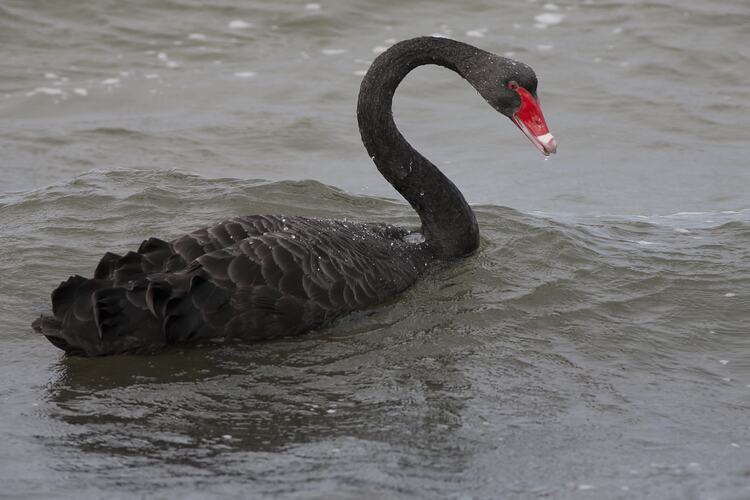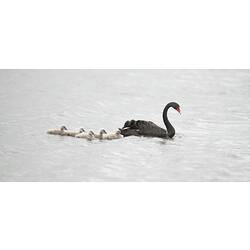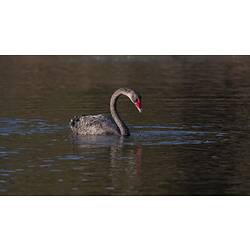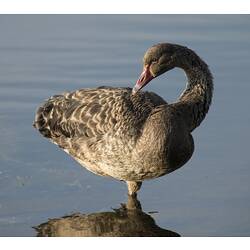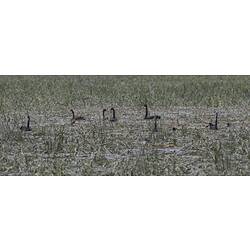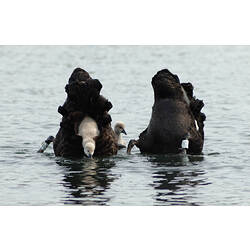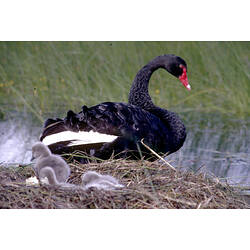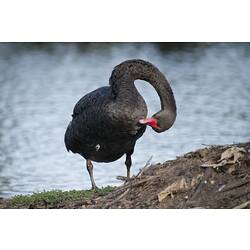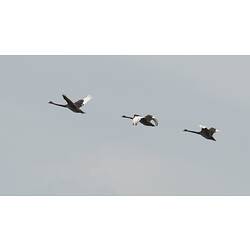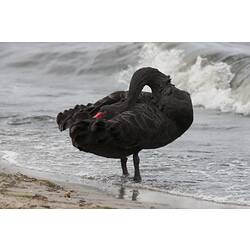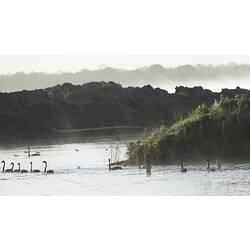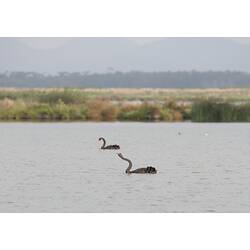General Description
The feathers are all black except for the outer wing feathers; these are white and are easy to see when the birds are in flight but are hidden when the wings are folded. Black Swans have a long thin neck. The bill is red with white near the tip, and is slightly hooked. The feet are webbed. Bill to tail length is up to 140 cm, of which the head and neck are about half.
Biology
Black Swans feed mainly on aquatic plants. They eat whilst swimming, taking plants from near the surface, or up-ending to reach plants in deeper water; with their long necks they can reach down one metre. They also feed in open pastures close to water. Nests are sometimes on land but more usually on the water where the birds gather floating vegetation into a large heap. Males aggressively defend their territory in the breeding season.
Distribution
Eastern and western mainland Australia and Tasmania.
Habitat
Deep permanent water, open lakes, wetlands, and coastal bays.
More Information
-
Animal Type
-
Animal SubType
-
Brief Id
A large black waterbird with a very long neck, a red bill and a red line around the eye.
-
Colours
Black, White
-
Maximum Size
140 cm
-
Habitats
-
Diet
Herbivore
-
Endemicity
-
Commercial
No
-
Conservation Statuses
CITES: Not listed, FFG Threatened List: Not listed, EPBC Act 1999: Not listed, IUCN Red List: Least Concern
-
Taxon Name
-
Common Name
Black Swan
-
Kingdom
-
Phylum
-
Subphylum
-
Class
-
Subclass
-
Order
-
Family
-
Subfamily
-
Genus
-
Species Name
atratus
